What is Perioral Dermatitis?
Perioral dermatitis is a common inflammatory condition of the skin which results in redness, rash and papule like eruptions. The term "peri" means next to and the word "oral" means mouth. So, if we break apart the word it means a skin rash that is around the mouth. Perioral dermatitis can also form around the nose & eyes, in which case it’s called periorificial dermatitis.
Because dermatitis is caused by inflammation the treatment prescribed by doctors is often the use of steroids which act as anti-inflammatory agents on the skin. This can work fine for regular dermatitis but can make perioral dermatitis even worse.

Perioral Dermatitis "Triggers"
So why is perioral dermatitis more difficult to treat? We do understand that there are some potential things that tend to trigger the condition. And these are very important because if we understand how the disease state is triggered then we can actively try to avoid them.
It has also been suggested that perioral dermatitis results from an imbalance in bacterial concentrations or damage to the acid mantle on the surface of your skin. As this imbalance occurs your body responds with the inflammatory process known as perioral dermatitis.
Common triggers:
- Make-up and other cosmetics
- Topical steroids such as hydrocortisone
- Cosmetic procedures such as microdermabrasion
- Environmental exposure
- Misusing chemical and physical exfoliators
- Sodium lauryl/laureth sulfate in hair care, laundry detergent, and toothpaste
- Fluoride in toothpaste
- Topical application of high Percentages of essential Oils
- Heavy creams and facial oils
- Hormonal fluctuations
- Stress
- Trauma or scarring to the face
- Oral antibiotic use

What you should do when you have a Perioral dermatitis flare up:
#1. Stop using makeup.
The #1 most important part of treating perioral dermatitis is to stop using pretty much anything on your face that isn't necessary. This includes make-up. Or at least try to go bare faced as much as possible or wear minimal product not directly on top of the flared area of skin. I know it's tempting to want to put something on it and cover it up, but this is really a condition where less is more. The best thing you can do for your face is let it heal naturally and breathe.
#2 Use water-only to cleanse your skin.
Your skin barrier is in damage control, so you want to avoid unnecessarily stripping the skins natural pH any further. Use clean hands with cool water to cleanse only, avoid any use of wipes or surfaces that may cause extra irritation. Also, be careful of the advice you see on the internet about using apple cider vinegar. This is far too acidic & will make your flare up worse.

#3. Use AMPERNA®'S Topical probiotic skincare.
Another way to treat perioral dermatitis is to use topical probiotic skincare. Your skin is a huge organ and it has a bacterial ecosystem just like your gut microbiome.
One of the triggers of perioral dermatitis is a change in bacterial skin concentrations and damage to the acid mantle. You can fight this process by directly applying probiotics right to your skin.
The hero ingredient of AMPERNA® skincare is our active probiotic complex, Lactococcus ferment lysate. Developed in conjunction with one of Australia’s most experienced skincare chemists, AMPERNA® is the first Australian brand to bring you a full range of probiotic skincare products, and the first to use this particular strain in any Australian skincare product.
#4. Avoid exfoliating procedures.
Another thing that you will want to completely avoid is the use of any cosmetic procedures which may cause extra damage to your skin. Procedures that fit into this category include microdermabrasion, chemical peels, laser therapy and so on.
The way that these therapies work is by damaging the skin and initiating the healing response which rejuvenates the skin and helps reverse the aging process. This is great if your skin is currently healthy, but it can make PD worse because it falls into the "trauma" category. So, during the perioral dermatitis healing stage make sure that you avoid the use of any exfoliating procedure such as these.
#5. Stop using topical steroids.
The Australian College of Dermatologists recommends stopping the use of steroid creams if they are the suspected trigger. This is important because it is very tempting to use skin products such as steroids because they can temporarily reduce the symptoms of perioral dermatitis, but you have to consider that often steroids make the problem worse. You are likely to see a rebound or flare-up of perioral dermatitis after you stop using the cream but don’t be tempted to start using it again!
#6 Audit your personal care products.
Remove all sodium lauryl/laureth sulfate from your home. This includes shampoo, toothpaste, laundry detergent, and hand soap or body wash.
Identifying Sodium Lauryl Sulfate (SLS) and Sodium Laureth Sulfate (SLES) in personal care products can be challenging, as these ingredients are often listed under different names or abbreviations. Some common names for SLS and SLES include sodium dodecyl sulfate, sodium salt sulfate, and sodium salt sulfuric acid.
Alternative ingredients such as cocamidopropyl betaine, decyl glucoside, and lauryl glucoside are gentler surfactants that are less likely to cause skin irritation.
#7 Avoid apple cider vinegar for perioral dermatitis.
Apple cider vinegar is not recommended for perioral dermatitis and can actually make the condition worse. Its high acidity can severely irritate already sensitive, inflamed skin, leading to increased redness, stinging, and prolonged flare-ups.
Despite its popularity as a natural remedy, applying apple cider vinegar to compromised skin barriers—like those affected by perioral dermatitis—can cause more harm than good. It’s best to avoid harsh DIY treatments and stick to gentle, dermatologist-recommended products designed to calm and support the skin.

How long before it goes away?
When treating perioral dermatitis, you need to set your expectations up early that your skin may get a little worse before it gets better. Everybody's condition and how their skin heals is different so some peoples skin may heal quicker than others. And some may take more time. But trust the process and don't fall into the trap of trying different things to help your healing move along faster. You'll end up doing more damage than good.
"My flared perioral dermatitis was red-raw before I started using the AMPERNA Soothing Duo" - Alison, Amperna Office Administrator. "So it took approximately a week for my P.D to completely calm down and about two weeks to go away. The Soothing Duo products instantly made my skin feel soothed and calm which was a nice relief. Since then my P.D has never returned, I am so happy how these products have helped keep my skin healhy"
Perioral Dermatitis Healing Stages
Perioral dermatitis healing typically occurs in stages. In the beginning, inflammation may reduce, with redness and itching gradually calming down. As the skin starts to repair, flaky or dry patches may appear, which is a sign of healing. Over time, bumps and pustules fade, and skin tone begins to even out. Complete recovery can take several weeks to months, depending on the severity and consistency of your skincare routine. Supporting the skin barrier with gentle, non-irritating products and avoiding known triggers is key throughout the healing process.
Other tips for treating Perioral Dermatitis
In addition to the tips listed above you will also want to follow a couple of other guidelines which may help you get on the right track.
The first is your diet
Remember that perioral dermatitis may be triggered by things that are going on inside of your body as well as those on the outside. Because of this you should take all reasonable steps to improve what you put into your body to help the healing process. This includes your diet! During the healing process I recommend that you focus on eating an anti-inflammatory diet with plenty of fruits and vegetables and cut back on the sugar. All of these will help improve your gut function and reduce inflammation in your body.
The second is water intake
Next you need to be sure that you are staying adequately hydrated! Hydration helps improve the quality and texture of your skin and helps you eliminate toxins. Remember your body only has 4 ways to eliminate toxins: urination, stool, breath and sweat. You want to make sure that you maximise all of these! Focus on drinking at least 2-3 litres per day.

The third is sun exposure
Last on the list is sun exposure and this may be another big one. During the healing process it's probably safer to avoid the sun as much as possible to avoid any extra damage to your skin. In some skin diseases (such as psoriasis) sun exposure may be therapeutic, but there isn't enough information to say whether it's helpful in perioral dermatitis. Because of this it's probably safer to simply avoid direct sunlight for prolonged periods of time to your face. If you simply avoid the sun you can then also avoid the use of daily sunscreen which may just irritate your skin as well.


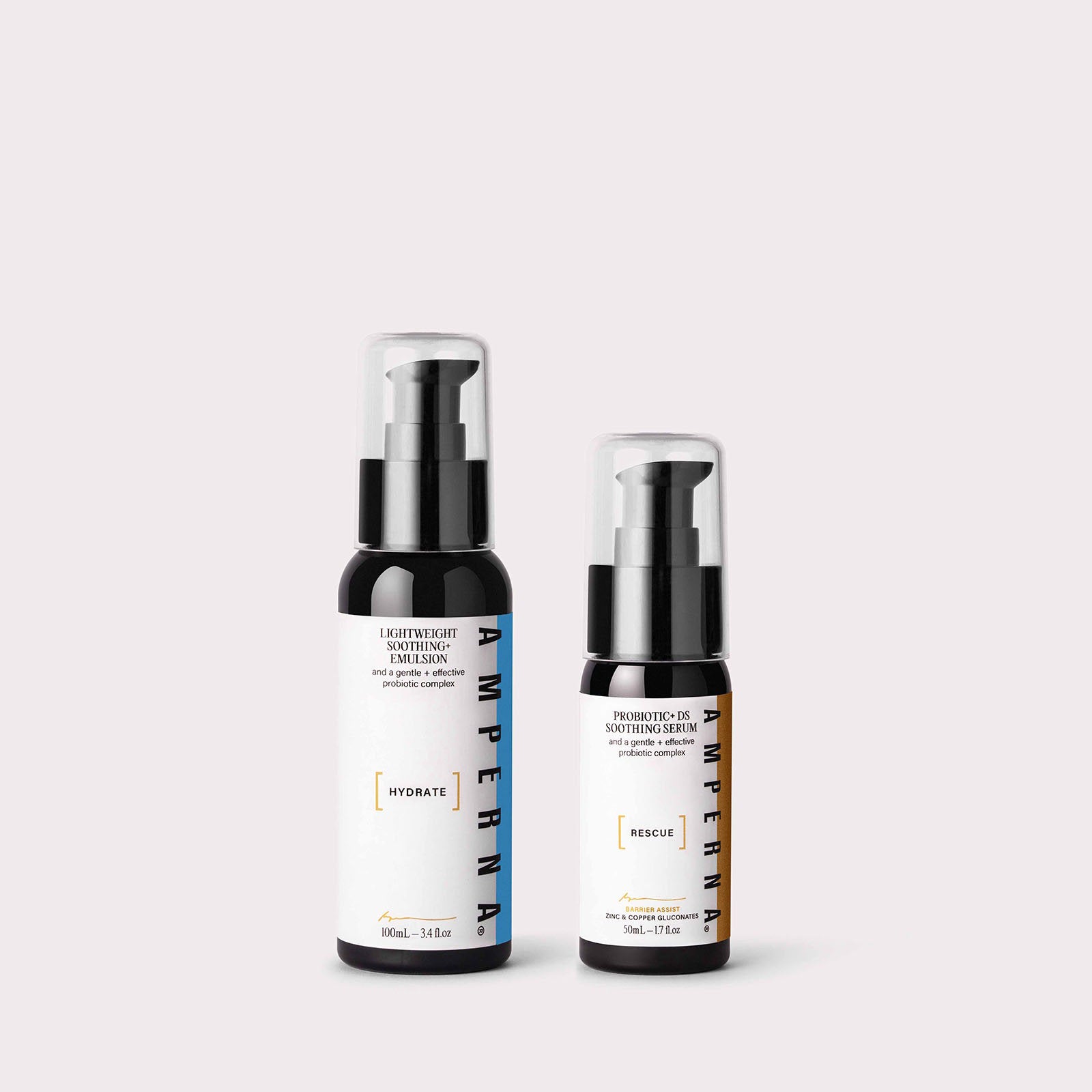
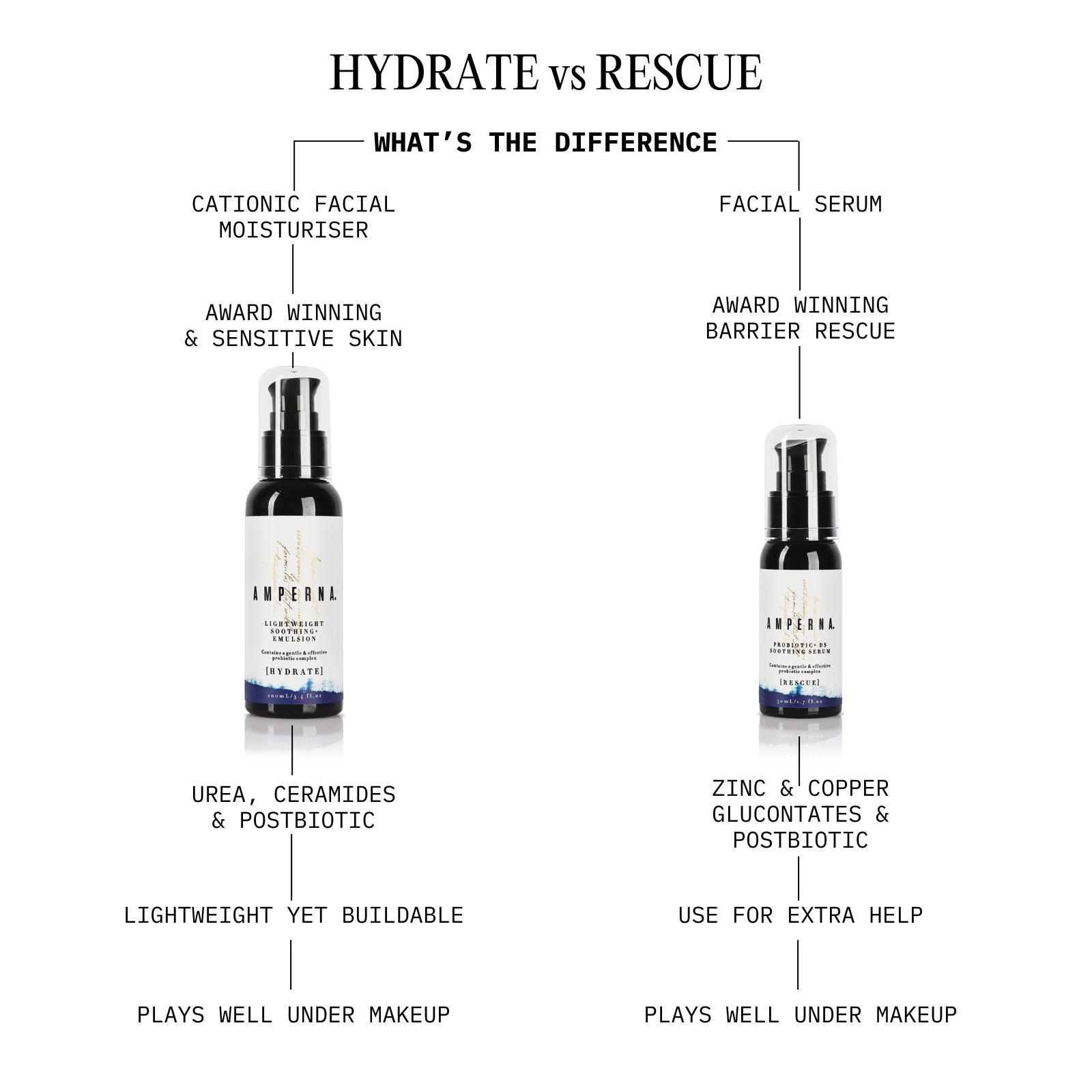
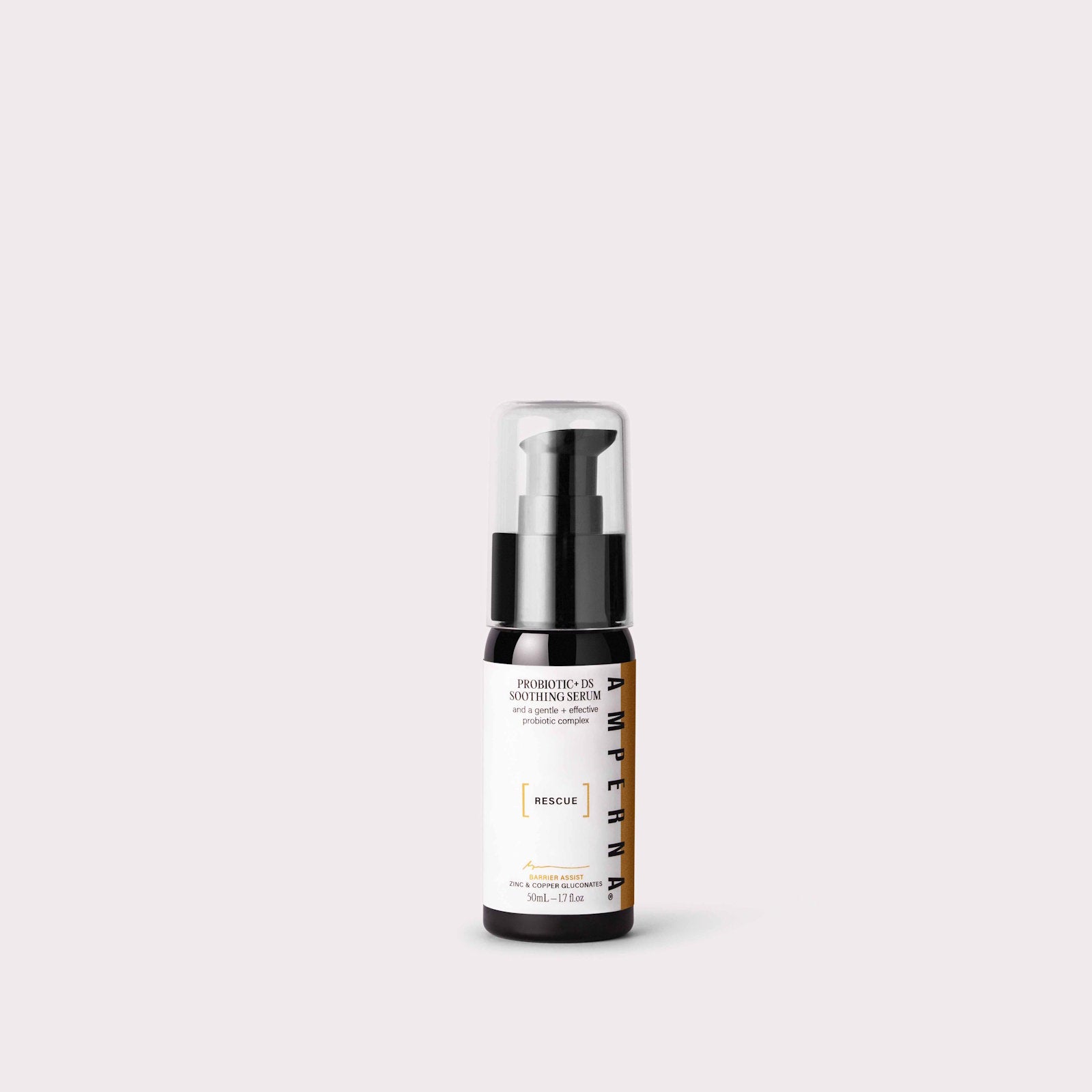



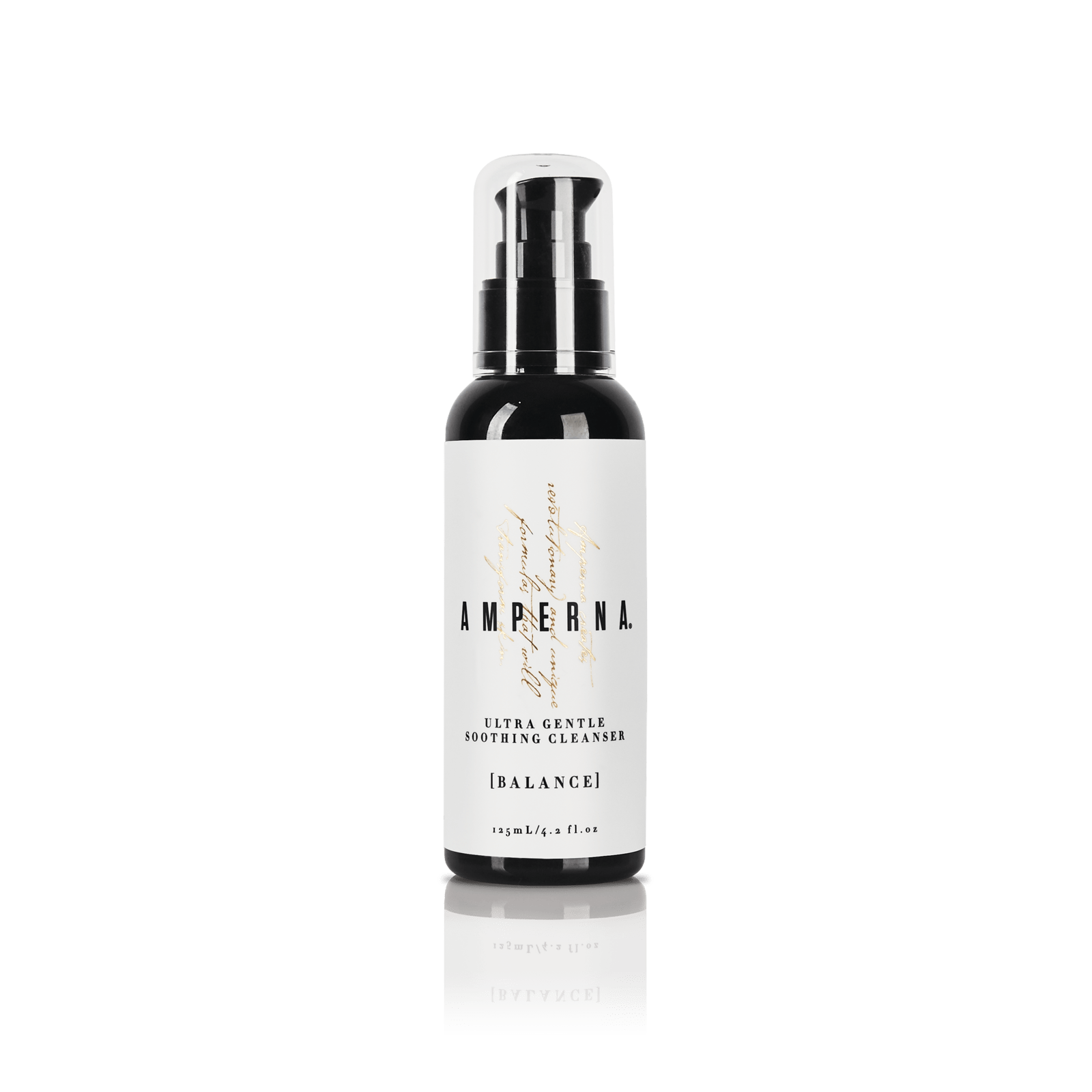
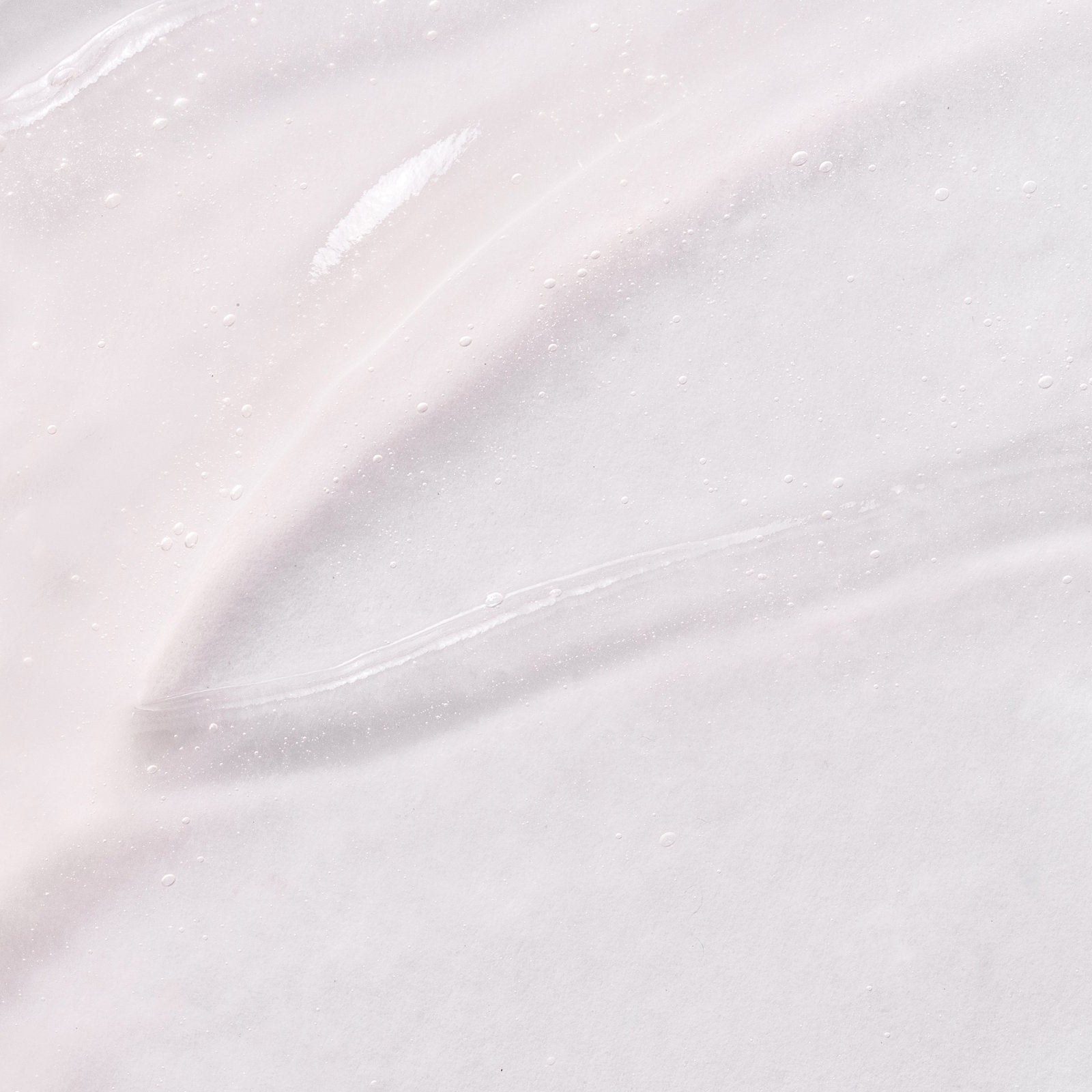



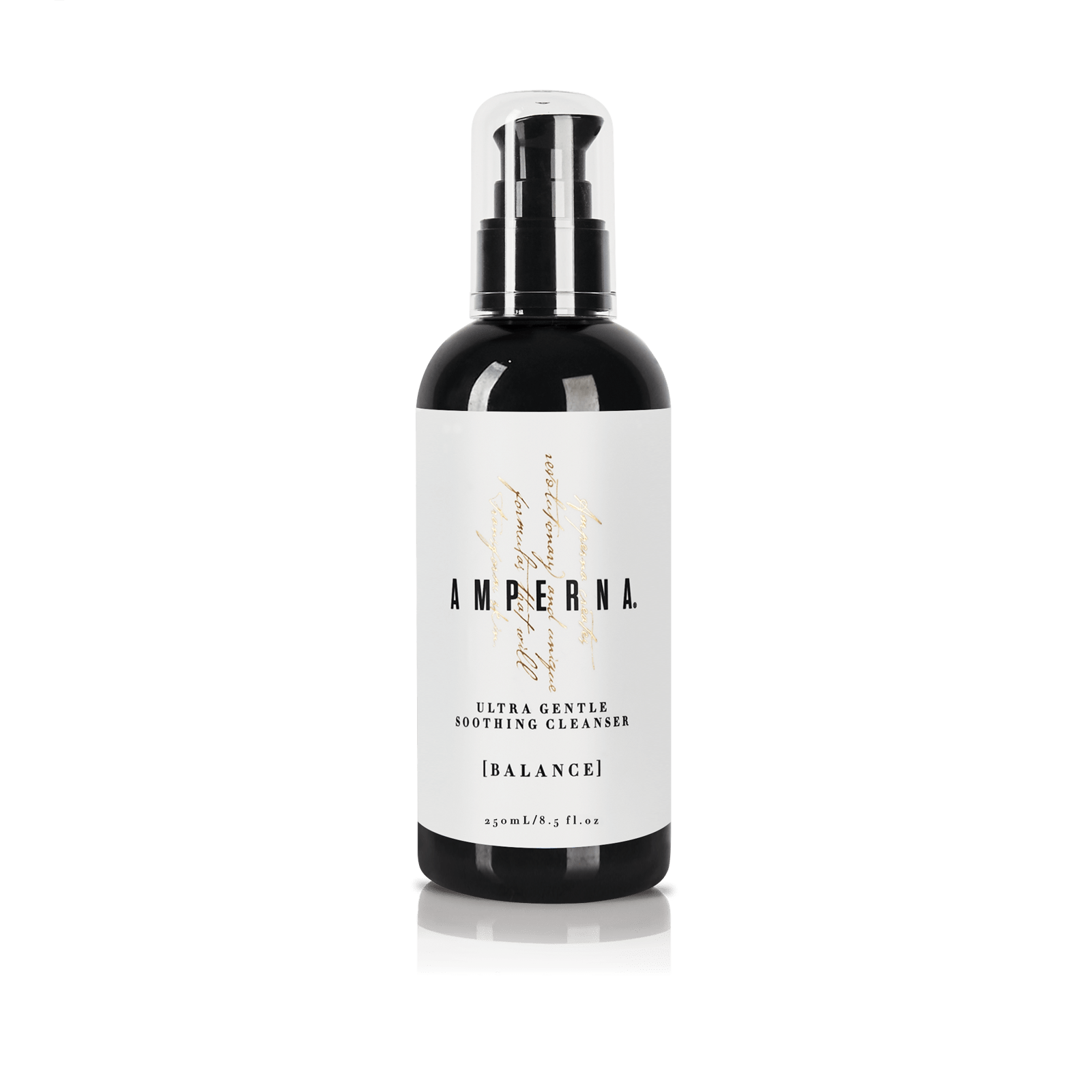

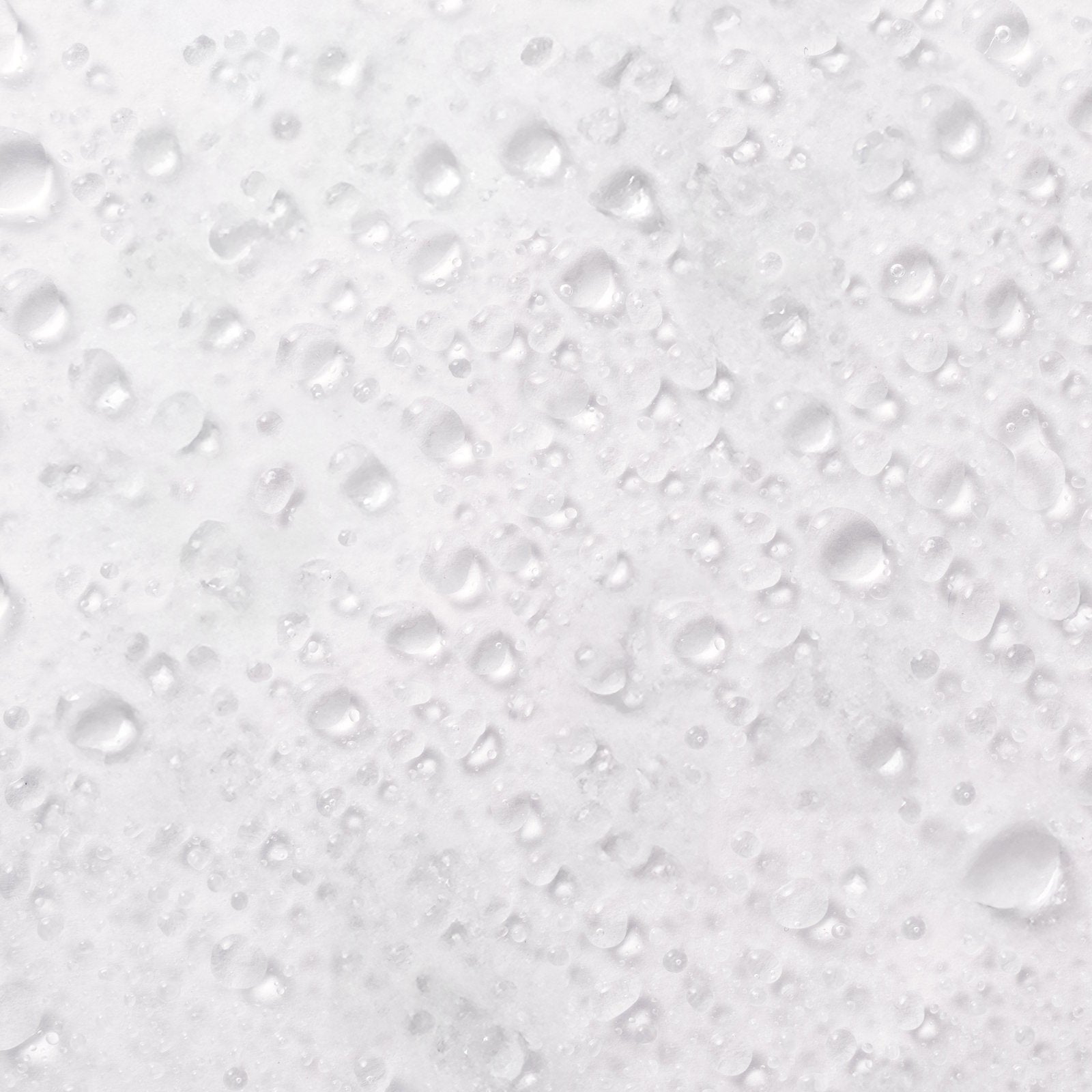

![Introducing AMPERNA® [DERMACARE] Haircare: For Scalp Comfort and Strong Hair](http://amperna.com/cdn/shop/articles/42_efd53385-7cf9-4b45-8e54-982415ee8fbc.jpg?crop=center&height=720&v=1761871871&width=1200)
